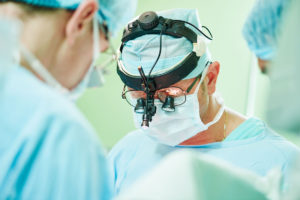Selective Dorsal Rhizotomy (SDR) Surgery for Children with CP
Selective dorsal rhizotomy is a surgery that reduces muscle stiffness and spasticity in the legs, and works best for patients with spastic cerebral palsy.

SDR Surgery to Treat CP
The brain damage that causes cerebral palsy makes the nervous system fire in a way that can cause spasms. Sometimes, the only way to remedy the problem is to sever those nerves, although this is usually a last resort. Even though the prospect of having nerves permanently severed is a bit intimidating, it can go a long way toward restoring mobility for certain people.
Selective dorsal rhizotomy is one of the newer surgical procedures available for treating spastic CP, and it has shown a great deal of promise for many. This surgical procedure is said to be ideal for children that are between the ages of 3 and 10. Benefits vary from patient to patient, and are most-prevalent for children under the age of 4. For the most part, children who can understand and follow instruction are preferred since they may have a better post-surgery prognosis.
Selective dorsal rhizotomy is different from other cerebral palsy treatments because the benefits are usually lifelong, rather than temporary. Gains in movement allow increased abilities in walking, breathing, sitting up, bending at the waist, hand use, and head control.
The Procedure
During the SDR procedure, your child’s neurosurgeon will create a small (two to four inch) incision in the lower back, revealing the musculature underneath. They then remove portions of the spinous processes and lamina, revealing the spinal cord and nerves underneath. Using x-ray and Ultrasound, the surgeons locate the tip of the spinal cord and identify/separate the motor nerves from the sensory nerves.
After testing the nerves via neurostimulation monitoring, the surgeon will sever a percentage of the abnormal nerves. This prevents those nerve fibers from transmitting the messages that cause the muscles to spasm.
Benefits and Risks
Those who’ve undergone SDR surgery report benefits such as better motor control, relief from back pain, better results in physical therapy, and fewer incidences of muscle stiffness.
Risks center on the surgery itself, and you should speak with your pediatrician to see if SDR surgery is right for your child. There’s always the risk that the surgeon may cut too many nerve fibers, and if the incorrect fibers are severed, it could result in paresis or paralysis.
We’re excited to hear about any and all treatments which may help those suffering from mobility issues, and hope that this type of surgery offers relief to those who need it most.
